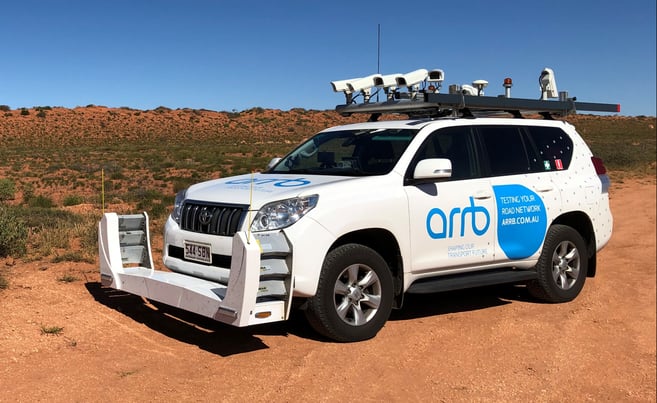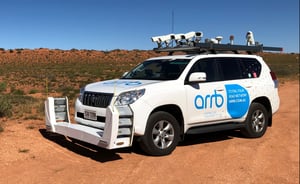A common question to newcomers in the data collection field is, "Why does ARRB have so many different vehicles?" The answer is because they all do different things!

ARRB has prepared this overview of some of the vehicles that ARRB uses and what each one does:
Ride Quality Test (RQT) vehicles are equipped with a simple two laser profiler capable of measuring roughness and texture. They also have at least one camera to assist in reviewing the data in the office and to help clients understand their results. These vehicles typically operate on sealed roads but are also often used during the construction stage to assist road builders meet their contractual standards.
Unsealed Roads Vehicles (URV) are very similar to the RQT vehicles but are equipped with more cameras and some limited off-road ability for surveying rougher rural unsealed roads.
Network Survey Vehicles (NSV) are equipped with either a thirteen Laser Profiler (13LP) or a 3D Laser Crack Measurement System (LCMS). These vehicles are designed for surveying larger local government or state road networks. As well as roughness and texture they can also report rutting. They are also fitted with a large number of calibrated digital cameras and the imagery they collect can be used for visual rating of surface defects such as cracking, or for identifying and rating roadside assets. For very large networks an LCMS equipped vehicle can be used to automatically identify and quantify cracking using Automatic Crack Detection (ACD) software, which is faster than manual visual rating. 13LP equipped vehicles may also operate on unsealed roads, but LCMS vehicles are restricted to sealed roads.
Intelligent Safe Surface Assessment Vehicles (iSSAVe) are a large rigid truck equipped with two smaller test wheels on either side of the vehicle which are slightly offset to the direction of travel. Water from a large tank is sprayed onto the road surface in front of the test wheels at a given rate whilst the truck travels at a constant speed so that it can measure surface friction. iSSAVe vehicles are used predominantly for construction projects and surveys for toll road operators and state road authorities. iSSAVe vehicles can also collect roughness, texture and rutting data and digital imagery for visual rating.
Intelligent Pavement Assessment Vehicles (iPAVe) are a prime mover and trailer equipped with a heavy weight over a single rear axle. A series of lasers mounted in the trailer measures the deflection velocity of the pavement in the left hand wheel path as the truck travels down the road at highway speeds. This information is used to assess the bearing capacity of the pavement. It is predominately used for state road authorities but has been utilised on some local government networks too. iPAVe vehicles can also measure roughness, texture, rutting, digital imagery for visual rating and ACD cracking.
Falling or Heavy Weight Deflectometers (FWD/HWD) are trailer mounted devices that measure pavement deflection while stationary. They are often used on construction and local government projects.
All vehicles are equipped with a differential GPS and distance measuring instrument to ensure that results can be correlated back to a spatial location and road chainage. ARRB data can be reported back to the client in a wide range of formats including Excel, Access databases as well as spatial data formats. Visual imagery can also be provided for client use.
If you'd like more information, you can contact our Asset Performance team here.
